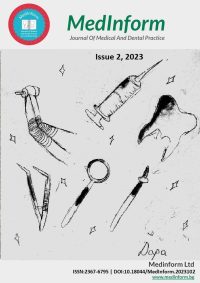Issue Two 2023
2023, Vol. 10, issue 2, (June)
Literature Review
Aluminium and oral health
Abstract:
Aluminium (Al) is the most common metal and the third most abundant chemical element in the Earth’s crust. Its widespread application in household, manufacturing, industry makes metal related toxicity important for human health.
In enamel and dentin, the concentration of aluminium is significantly higher in the group of healthy teeth than in that of carious and obturated teeth. Aluminium levels in carious enamel and dentin do not decrease as the carious process progresses. Studies have shown that deciduous teeth containing higher concentrations of Al had fewer cavities than teeth with lower concentrations of Al. Results suggest that Al acts as a possible cariostatic agent.
Deciduous teeth without caries are most useful for biological monitoring of aluminium. Salivary Al levels are significantly higher in children with treated caries than in children without caries. Topical application of aluminum reduced the incidence of fissure caries in rats. Higher levels of AI reduced the extent of lesion penetration into dentin.
Aluminium is a major constituent of glass ionomer cements. It has an inhibitory effect on bone mineralization. The significant release of aluminium from glass ionomer cements during early exposure to water may explain the lack of mineralisation of the predentin. The release of aluminium from glass ionomer cements into the mouth represents a negligible health hazard.
Aluminium oxide and aluminium ions included in the composition of MTA are dominant suppressors of the osteoclastogenesis process. They significantly suppress it by inhibiting osteoclast activity and appear to be capable of suppressing bone resorption in periapical lesions.
Alumina is the most commonly used abrasive in air abrasion to degrade dental tissues.
Orthodontic agents release negligible amounts of aluminum and do not significantly increase its amount in the mouth.
The incorporation of alumina nanoparticles adversely affects the flexural strength of polymethylmethacrylate but increases their thermal conductivity.
Keywords: aluminium, oral health, toxicity, glass ionomer cements, MTA

